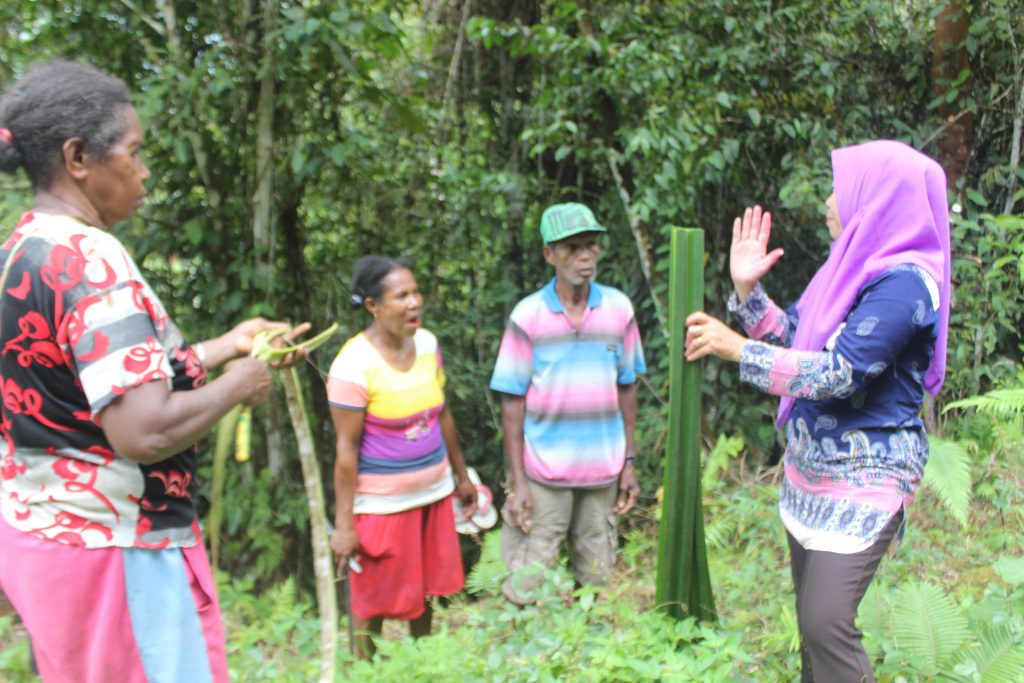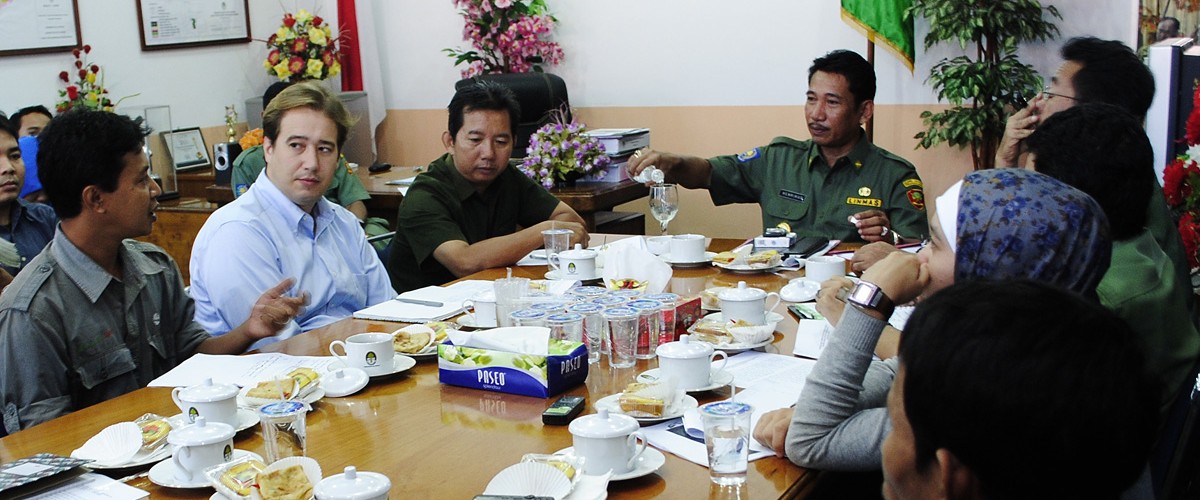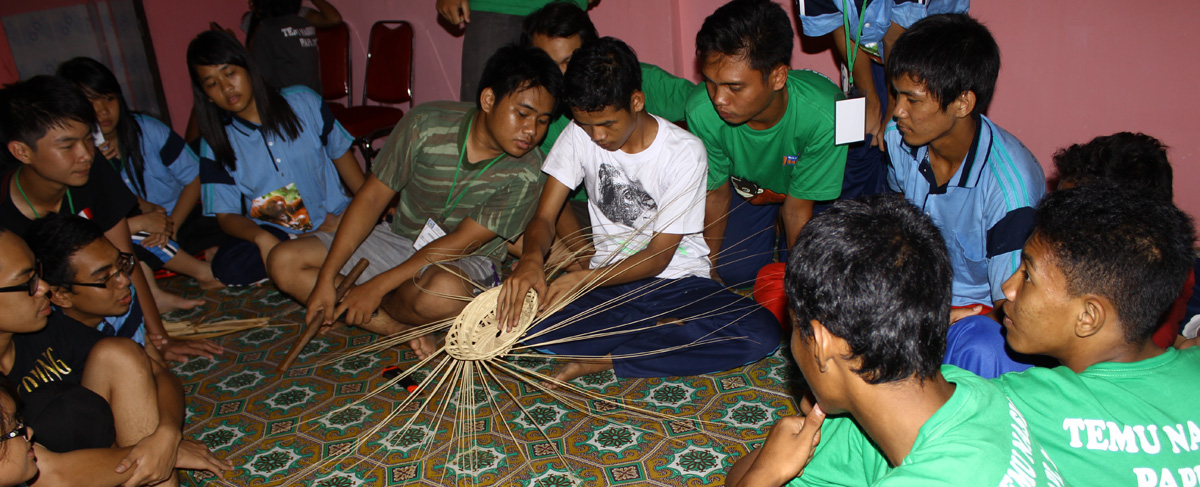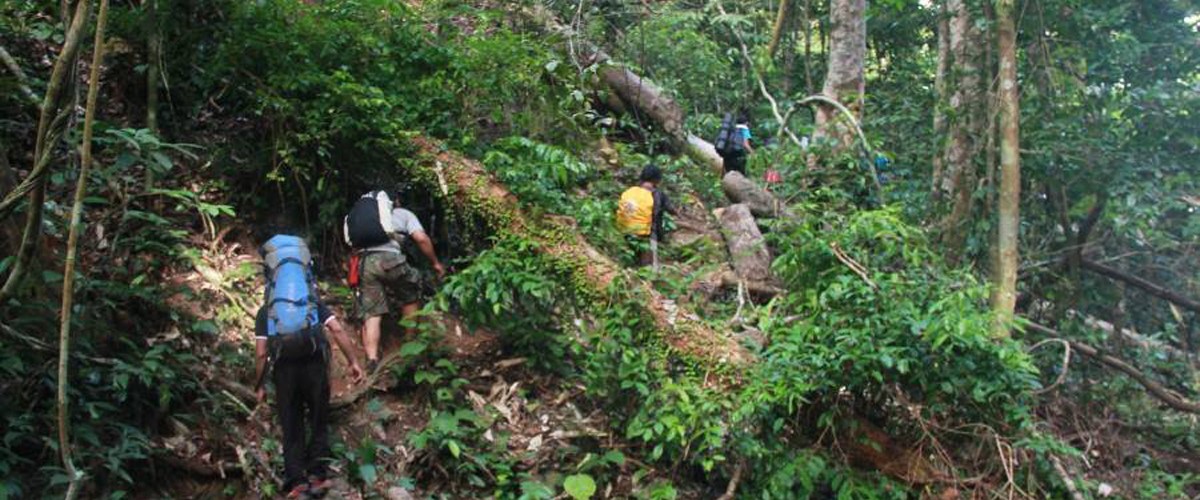By Victoria Gehrke, Conservation Program Director
One of GPOCP’s conservation strategies is to work within the heart of local communities, inspiring behavioral change and long-term thinking for wildlife conservation success. Our capacity building model works with villagers to hone in on a craft that interests them and what they assess as beneficial. This ensures continued motivation, follow-through and ultimately a high success rate. A key to our success has been identifying and nurturing potential community leaders to help drive change in community groups and build a lasting legacy of wildlife conservation throughout the Gunung Palung landscape.
As many of you may already know, Ibu Ida (Saparida) is one of our Sustainable Livelihoods program’s head artisans and lives in a small rural village in the Kayong Utara regency, in the buffer zones of Gunung Palung National Park. Ibu Ida has inspired cultural awareness, skill sharing, sustainable development and wildlife conservation through traditional craftsmanship using the Pandanus amaryllifolius plant. Ibu Ida learned the techniques of traditional mat weaving from her mother on her parent’s farm as a child. Ibu Ida later realized that these specific skills for creating these handicrafts, as well as how to harvest and manage the forest where the pandanus plants grow, were being lost between the generations. Her hobby became her passion, which in turn grew into sustainable community development directly benefiting forest conservation.

Pandanus requires a healthy forest canopy. In order for artisans to sustainably use this natural resource, they must actively conserve their neighboring forests from deforestation. Thus, Ibu Ida saw the connection between protecting forests and creating sustainable incomes for local people and she began encouraging artisans and other communities using this plant to protect their local flora and fauna.
Ibu Ida’s conservation story began back in August 2011, when Gunung Palung Orangutan Conservation Program (GPOCP) hosted a Sustainable Livelihoods meeting in her local village to discuss the artisans’ product development, networking and business management skills. Ibu Ida joined the newly formed group, where her enthusiasm and skills quickly shone through. Ibu Ida joined several training sessions and workshops, and learned how to start and maintain an active artisan community. With networking support from GPOCP, she developed a strategy to reach more buyers by connecting with private and government distributors. This connection enabled her to sell items in bulk quantities and helped her establish an economic alternative livelihood for other community members, especially locals involved in destructive livelihoods such as mining and logging. The social and economic success of this group, led by Ibu Ida and supported by GPOCP, has inspired multiple villages both locally and nationally to return to traditional craftsmanship and advocate for forest conservation through economical and sustainable livelihoods options.

In 2015, Ibu Ida became the spokesperson for the Kayong Utara regency artisan groups and started working with the Regency’s First Lady – who is also the Chairwoman of the National Crafts Council (DEKRANASDA) for the region. Guided by GPOCP, Ibu Ida was in the forefront, creating a collaboration with DEKRANASDA and local artisans. Crafts produced by the artisans are sold to DEKRANASDA, and in turn are distributed to buyers all over the nation through shops and expositions in West Java. Ibu Ida knew that this was a huge step in the right direction, “Getting involved with DEKRANASDA has given hope to local artisans that there is a need for their products and that others [appreciate their designs] and craftsmanship.” Ibu Ida was trusted by the other artisans to lead them in increasing the productivity of woven pandanusproducts that are sold every month now to DEKRANASDA.
In 2016, Ibu Ida took it upon herself to start visiting schools across the district – ranging from elementary to vocational high schools. Every month she would volunteer to teach traditional weaving techniques. Another highlight from 2016 is Ibu Ida’s work with Ibu Vina. Previously, Ibu Vina worked laboriously in dangerous rock mines. She would harvest these stones and boulders and sell them to make ends meet for her family. With guidance from Ibu Ida, and GPOCP’s community groups, Ibu Vina has quit this backbreaking work and now relies solely on the sale of her handicrafts to support her household.
In December 2017, Ibu Ida was invited by the head of three different villages to train a total of 115 community members in pandanus weaving as a way to improve the local economy while also conserving the forests in the Gunung Palung National Park landscape. The National Park heard of her success and invited her to two more villages to train another 55 people. Gunung Palung National Park staff have since continued their support and collaboration with Ibu Ida through community empowerment programs, and even named her their outreach counterpart. Ibu Ida was also appointed the Pioneer in Natural Resource Management after her success in leading and mobilizing communities to use wild plants for economic stability.
In 2019, GPOCP’s Sustainable Livelihoods program has succeeded in our goal of creating high quality profiles at the native community level who can influence the local government towards sustainable development. Ibu Ida has, as of December 3rd, been appointed an official board member of the National Crafts Council (DEKRANASDA) of Kayong Utara. The inauguration ceremony was held in Sukadana and she was appointed directly by the Bupati (Governor) of Kayong Utara himself. With this new position for local government representative, Ibu Ida can directly influence any regulations regarding traditional crafts (NTFP products) and sustainable land-use management in Kayong Utara.
Ibu Ida continues her conservation stewardship. She has spearheaded the establishment of a new agroforestry plot where she and her group planted 50 clusters of Pandanus, which included 155 tree saplings including 4 MPTS (multipurpose tree species) such as Rambutan (Nephelium lappaceum), Durian (Durio zibethinus), Jengkol (Archidendron pauciflorum) and Petai (Parkia speciosa) which will provide the canopy cover needed for pandanusto thrive. Ibu Ida continues to motivate and inspire through her passion and success in her business, programs and collaborations, as well as support from the national governmental level. GPOCP is more than honored to collaborate with this formidable woman and grateful she has helped us as much as we have helped her reach government levels for local conservation. From grassroots (or shall we say Pandanus roots?) to government, working with individuals at the community level is the key to long-term conservation success.








